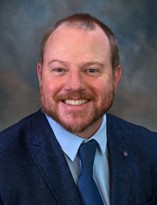Vascular-endovascular surgeons are highly trained specialists who treat diseases of the vascular system – the arteries, veins and lymphatic systems throughout the body. Our team at CHI Memorial Vascular Surgery Specialists diagnoses and treats vascular diseases using state-of-the art techniques to repair blocked arteries and damaged blood vessels. More than the physicians who provide expert care, effective vascular and endovascular surgery depends on highly trained support staff – nurses, technologists, medical assistants and others – all working together to provide the highest level of care available in the Chattanooga region.
Why do I need vascular surgery?
Vascular surgery focuses on the treatment of two main problems that can occur in a person’s blood vessels: narrowing that develops from the buildup of plaque or enlargement that develops from degeneration of the vessel wall and weakens it. This can occur in vessels located throughout the body including the neck, extremities, abdomen, and chest.
When plaque builds up and causes narrowing, blood flow may be limited. A stroke can happen when this narrowing occurs in the arteries of the neck. This narrowing or limited blood flow can also impact a person’s ability to walk or cause severe pain or non-healing ulcers on the legs. If the artery wall weakens and enlarges, aneurysms can develop and lead to complications like rupture or thrombosis (clotting). The vascular surgeon’s job is to clean out blocked arteries when necessary and keep aneurysms from rupturing or clotting if they enlarge to a critical size.
In the past, vascular surgery was mostly open surgery. Today, many of the procedures are performed using minimally invasive approaches where the blood vessel is accessed with a small needle. Under X-ray guidance, a wire is guided through the blood vessel and is used like a track to deliver balloon stents and devices that remove plaque in the blood vessels or clear obstructions.
Expertise and Innovation
The vascular-endovascular surgeons at CHI Memorial treat both common and complex problems of the vascular system. Our expert surgeons tailor your treatment plan to your specific needs and preferences. In many cases, procedures are performed using minimally invasive techniques, depending on the type and severity of your condition. Minimally invasive or non-invasive procedures may offer many advantages over traditional surgery, resulting in less pain and scaring and a shorter recovery for you.
Full-spectrum vascular care
CHI Memorial provides the full spectrum of services to diagnose and effectively treat vascular disease, or conditions that affect the blood vessels in every part of the body except for the heart and brain. After an evaluation, vascular physicians diagnose symptoms, discuss your options and develop a customized care plan. We understand that no matter how routine a treatment is for us, it’s not routine for you. That’s why we take time to answer your questions and discuss your options in detail to alleviate your concerns.
Low-cost, painless screenings allow specialists to detect vascular disease in its earliest stages when treatment is most effective. Conditions we treat include:




